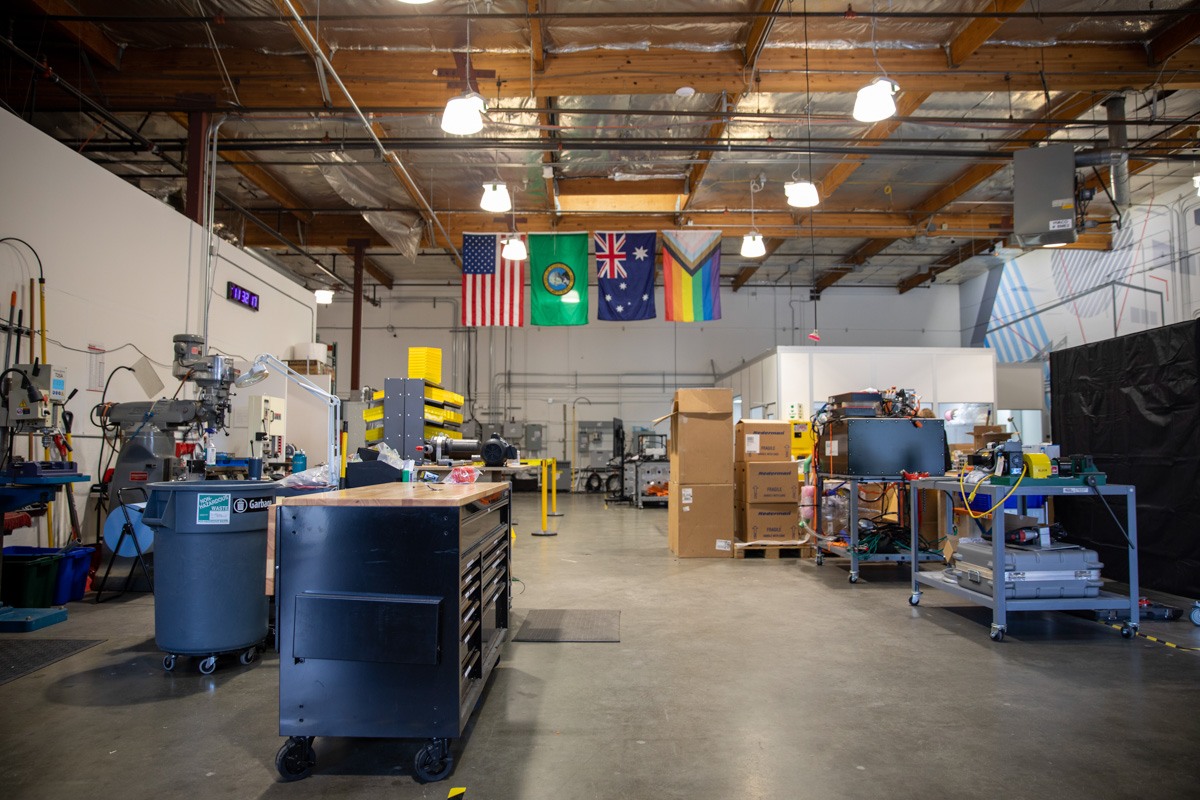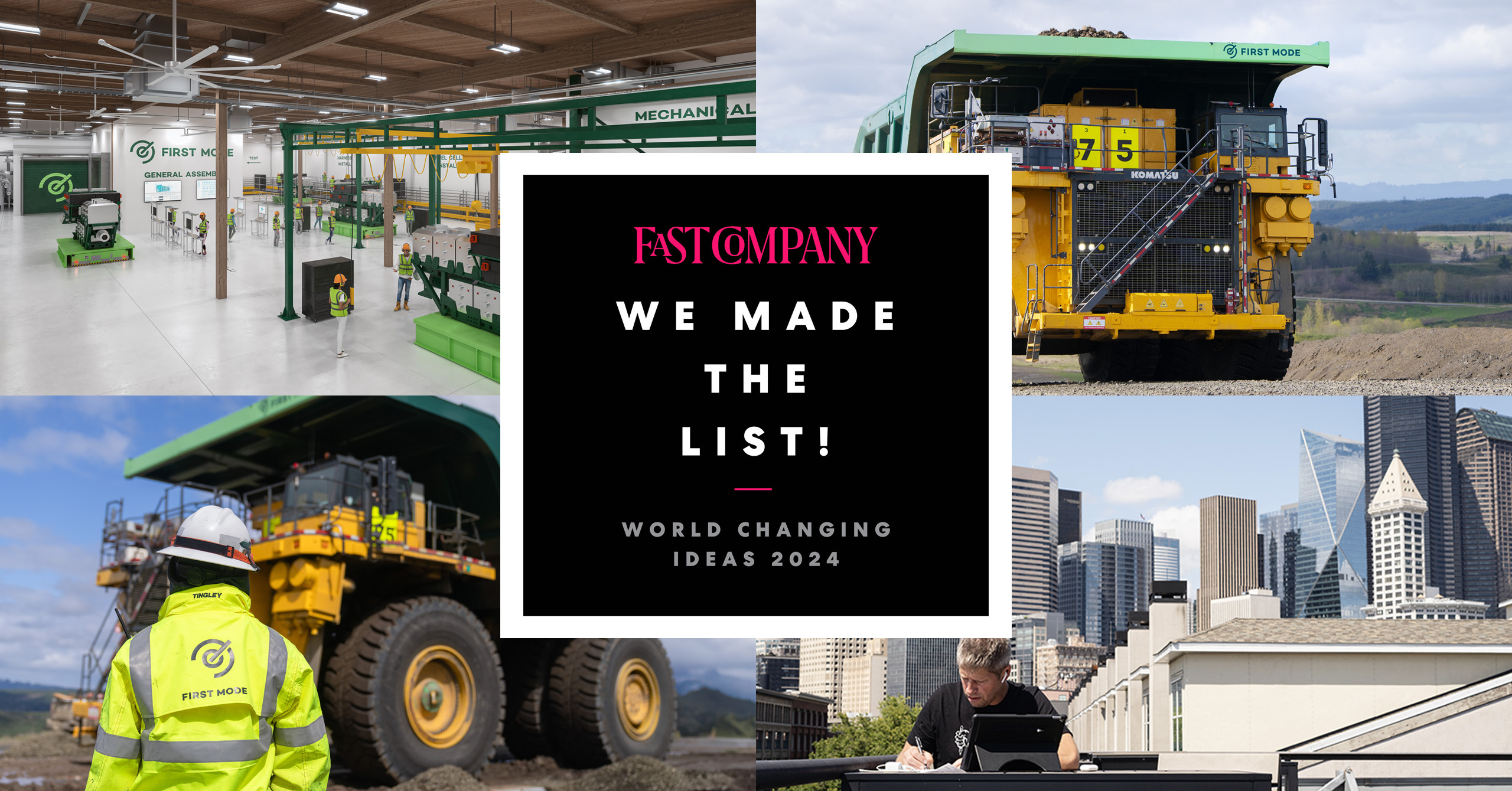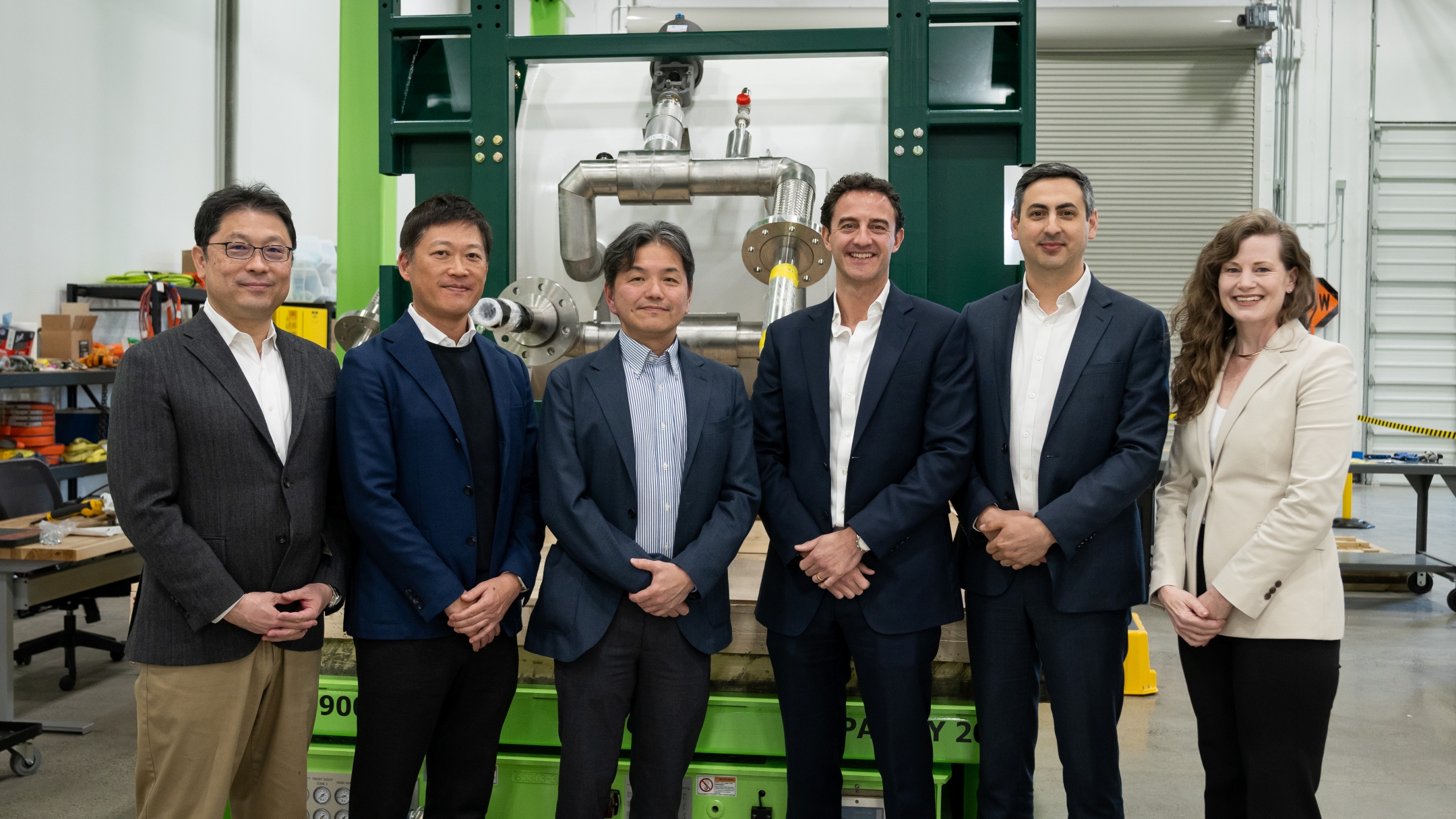Photo by Drew Wehrle
First Mode’s new hardware development center hides behind a nondescript facade less than a block from the iconic Starbucks clock tower in Seattle’s SoDo neighborhood. It’s easy to miss, but history is quietly being made in this laboratory—a unique facility tasked with inventing, building, and demonstrating tools helping lead the global transition to clean energy in the coming years.
Since 2020, the space has been transformed from a generic warehouse into a laboratory brimming with custom test bays for clean tech development. It’s designed to house ultra-high-power systems ranging from lithium-ion batteries the size of a car to hydrogen fuel cells capable of fully charging 40 Tesla Model 3s. Hardware in development includes Stegosaurus-sized mobile platforms capable of operating in some of the most extreme environments on Earth. These will be integrated, tested, and verified for use in mining, with a wide range of potential applications including energy, agriculture, maritime, locomotive, and construction.

Our space is one of only a few facilities in Seattle built intentionally to serve one of the greatest challenges humans have ever faced: curtailing the human contribution of greenhouse gases to the atmosphere. Here’s a glimpse at what’s going on behind the warehouse doors.
A Lab Purpose-Built for Heavy Industry
Within this former warehouse, big solutions are being built to have a far bigger impact than the sum of their parts. For example, inside is one of the world’s largest zero-emission engines, undergoing rigorous testing before it is shipped to its final destination in South Africa later this year. While our entire Seattle facility is only about 20,000 square feet, this single power module is capable of powering the entirety of the Seattle Seahawks’ nearby stadium (Lumen Field, with a capacity of 72,000). Alternatively, it could power as many as 2,500 homes. Its actual purpose will be to keep around 700 cars’ worth of CO2 out of our atmosphere every year.

Once the power module reaches South Africa, First Mode will install and field test it with our client Anglo American. The integration will convert one of the largest vehicles on the planet—a diesel-fueled haul truck three stories tall and heavier than the Statue of Liberty—into one of the largest zero-emission vehicles on Earth. Given that these giant trucks represent nearly 80% of diesel consumption on mine sites, transitioning just one of these diesel haulers to run on green hydrogen (produced on site using renewable resources) will have a measurable impact on Anglo American’s CO2 emissions.

We also believe there are many other industrial applications that could benefit from large-scale, mobile, clean-power generators like this one. Successful deployment of this system into an environment as hot, dusty, and unforgiving as an above-ground mine will lay the groundwork for future adaptions of this technology into other sectors.
Helping Advance Washington’s Clean Tech Industry

Since its inception, the Biden administration has introduced an ambitious initiative to tackle our country’s clean energy and infrastructure challenges. First Mode believes that the range of capabilities our facilities have been built to offer will help Washington State and the U.S. succeed in this endeavor.
Beyond the projects and technologies noted above, the First Mode team is currently working on a great deal of additional research and development around clean technology, including:
- Design and development of one of the world’s fastest zero-emission vehicles to compete in the 2022 Baja 1000, widely considered the world’s toughest off-road endurance race. This vehicle will be the first-ever race car powered by liquid hydrogen.
- Designing the next generation of diesel-electric and hydrogen-powered trucks that will help decarbonize the mining industry.
- Designing a facility capable of producing and supplying liquefied or gaseous hydrogen in the U.S.

Each of these projects has enabled us to grow our team and capabilities, creating over 100 jobs in renewable energy and technology in Washington State, with dozens of additional roles currently open on our site.
Our Seattle facility is the centerpiece of our growing footprint in clean tech around the world, and a growing hub of collaboration for a diversity of talents and engineering disciplines. That said, it’s just the beginning of our commitment to building out facilities to support the development of clean technology.






Want to help us engineer the future of clean energy and technology? We’re hiring! Check out our open positions in Seattle and Perth here.




